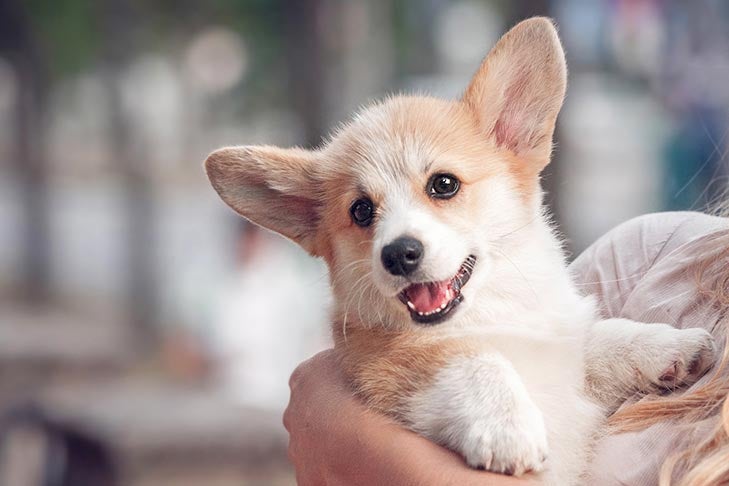
AKC is a participant in affiliate advertising programs designed to provide a means for sites to earn advertising fees by advertising and linking to akc.org. If you purchase a product through this article, we may receive a portion of the sale.
Paid Advertisement
Congratulations on deciding to welcome a new puppy into your life! Whether this is your first dog or it’s been a long time since you’ve owned a puppy, there’s a lot to learn about what to expect and how to handle certain changes in your dog as they age. Here, we’re focusing on the teething process. (Yes, puppies have baby teeth that fall out, just like human babies!) We’ve compiled a puppy teething timeline so you know exactly what to expect as your furry friend grows into their adult body.
Weeks 2 to 4:
Your puppy will still be with their mother and breeder when their baby teeth start coming in. At this point, their eyes will have opened and they’ll still be nursing.
Weeks 5 to 6:
By now all of your puppy’s baby teeth should have come in. Dogs usually have about 28 baby teeth total. Around this time, the breeder will likely have already or will be in the process of weaning the puppies in the litter as they learn to eat moist, soft puppy food.

Weeks 12 to 16:
This is around the time you’ll get to take your puppy home with you (some breeders let puppies go to their new owners’ homes at 8 weeks, but others wait an extra month or so, depending on the breed and the individual breeder’s preferences).
This is also the time when may start to find little crumb- to rice-sized teeth around your home as your puppy’s baby teeth start to shed and permanent adult teeth emerge. Anyone who has ever cared for a teething baby knows this process is painful! You should offer your puppy safe chew toys, at this point in their development. Also, ask your vet to check your puppy’s mouth to make sure everything is moving along as it should.
This period is also important for socialization — that is, getting your puppy used to new experiences in a low-stress situation. There’s a lot involved in this process, but since we’re on the topic of teeth here, this is a good time to start touching your puppy’s mouth, outside and in. (Be careful that they don’t nip you — those remaining puppy teeth are razor sharp.) By doing this, you’ll be setting your puppy up to be able to enjoy (or at least tolerate) getting their teeth brushed.
6 Months and Older:
By the time, your puppy is about six months old or so, all of their puppy teeth should have fallen out, and their adult teeth should have grown in. In general, adults dogs have about 42 teeth (fun fact: that’s about 10 more than people!). If you notice any baby teeth remaining, make sure to let your veterinarian know as they may need to be removed.
Keeping the Teeth Healthy
Now that your puppy has a full mouth of pearly white teeth, your job is to keep them that way. Dogs don’t have the sense to use their tongue to dislodge chewed food from their teeth — that combined with plaque in the mouth can lead to dog with stinky breath, if periodontal disease occurs, serious medical problems.

By brushing your pup’s teeth regularly, you can prevent or decrease the need for veterinary cleanings, which usually require anesthetizing the dog.
Begin by gently scrubbing the teeth with a finger brush or gauze pad. Later you can graduate to a toothbrush and canine toothpaste. Toothbrushes should be soft, and toothpaste must be formulated for a dog’s system (an enzymatic toothpaste will work both mechanically and chemically to destroy plaque). Toothpaste made for people can cause an upset stomach if your pup swallows it. Teeth can also be cleaned with a paste made of baking soda and water.
Also, certain foods, treats, and other dental products are available to help reduce plaque. Look for products that have a seal of approval from the Veterinary Oral Health Council.
Good luck on guiding your new puppy through these exciting first few months of their life!
PetLab Co. helps give our best friends the richest, healthiest lives possible through the power of scientific nutrition. To date, they’ve impacted the lives of over three million dogs and counting. Their products are vet-reviewed, NASC-approved, and manufactured in the USA in GMP-compliant facilities with global and domestic ingredients. To learn more visit www.thepetlabco.com.


